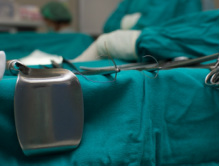
The bottom line of the article is pretty similar to that presented in the last blog post; we could probably still do more to improve outcomes for these patients. The statistics they present highlight the problem by comparing the emergency procedures to their elective ‘brothers’. The in-hospital and 30 days mortality of emergency compared to elective surgery are as follows:
- 38% versus 5% for AAA repair (not that surprising I suppose)
- 15% versus 6% for laparotomy (using colorectal cancer surgery as a comparison)
- 8.2 versus 1.2% for hip fracture repair (using total hip replacement as comparison)
The ruptured aaa
All not great news and all reiterating some of the points that the last blog covered; these patients have less in the way of physiological reserve, are on multiple drugs, and are less likely to get level 2 or 3 care post-op, all adding up to worse outcomes. But they stress that there are rays of light in AAA care. They flag up two big positive points as:
1. The introduction of the AAA screening programme
2. The potential role of endovascular aneurysm repair (EVAR).
Screening for a disease has its pros and cons that I won’t talk about here (though AAA screening has a good vibe about it), but the role of EVAR looks pretty good. The IMPROVE (Immediate Management of the Patient with Ruptured Aneurysm: Open Versus Endovascular repair) trial is currently still looking at its role in managing ruptured aneurysms. However, the evidence for EVAR in elective surgery is promising when compared to the traditional open approach (risk ratio of 3.8 with a range of 3.19 – 4.68 – Nice!) with the IMPROVE trial setting itself some decent targets.
The anaesthetic perspective
- Limited fluid resuscitation until cross-clamping of the aorta
- Establish intra-arterial blood pressure monitoring pre-induction
- Non-invasive cardiac output monitoring
- Careful induction, on the theatre table with the patient draped and the knife in the surgeons hand
- Good IV access (!)
wrap it up
Well thanks for reading, and I hope you are looking forward to parts 2 and 3 which should be following shortly. In the meantime I have put together some links to a few resources on the subject that you will hopefully find useful.
Tom Heaton
http://ceaccp.oxfordjournals.org/content/8/1/11.full - A great overview of the anaesthetic side of ruptured AAA management.
http://www.frca.co.uk/article.aspx?articleid=100967 – The Anaesthesia UK stuff on elective AAA anaesthetic management.
http://emedicine.medscape.com/article/756735-overview - The always useful Medscape pages on AAA rupture
http://www.uptodate.com/contents/open-surgical-repair-of-abdominal-aortic-aneurysm - The similarly useful ‘Up-To-Date’ resources on the topic
http://www.aaaqip.com/aaaqip/index.html - The website of the AAAQIP. Some ok information but focused more on elective management.
http://www.improvetrial.org/ - The homepage of the IMPROVE trial
http://info.clinicalkey.com/blog/february-2013-podcast-abdominal-aortic-aneurysm/ - a podcast (or free transcript) on the pre-operative components of AAA
http://emcrit.org/rush-exam/ - A bit of a tenuous link to AAA but an interesting podcast
Image courtesy of Arztsamui/FreeDigitalPhotos.net
 RSS Feed
RSS Feed
